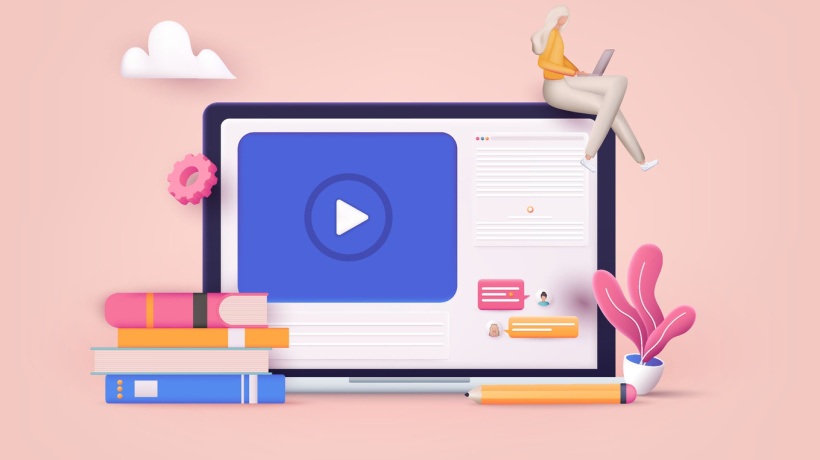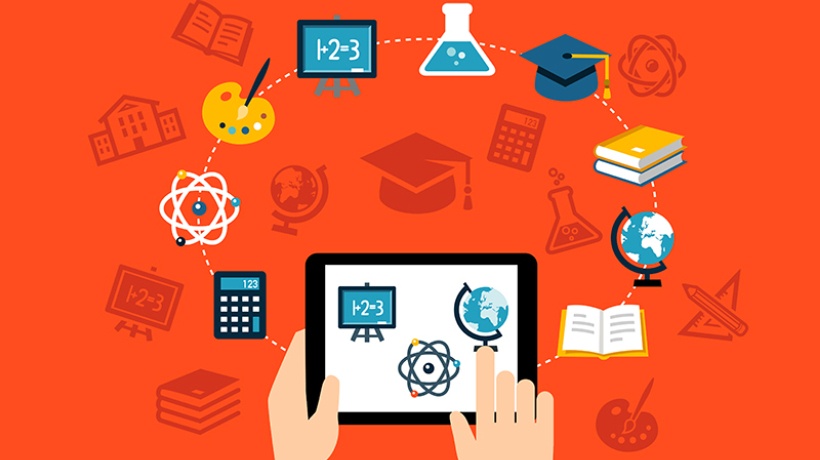The Education App Development Guide That You Need
In recent years, education apps have transformed the way we learn. From language learning to test preparation, educational application development has revolutionized the education industry. With the ever-growing demand for technology in education, creating an educational app is a great way to help students, teachers, and institutions alike. As per a 2022 survey report, Duolingo was the most downloaded education app in the US with 16.5 million downloads. It was followed by Toca Life World with 11.7 million downloads, and Photomath garnered 11 million downloads.
However, education app development is a complex process that requires careful planning, design, and execution. In this article, we'll explore everything you need to know about developing education apps, including the process involved, best practices for design, technologies used, and strategies for monetizing and marketing your app. Whether you're a teacher, a developer, or an entrepreneur looking to create an educational app, this post will provide you with the guidance you need to create a successful app that transforms the way we learn.
How To Create An Education App In 6 Simple Steps
The education app development process can be complex, involving several stages to build an educational app that is engaging, effective, and user-friendly. Here's an overview of the key steps involved in education application development:
1. Ideation
This stage involves generating ideas for educational app development. You'll need to research your target audience, identify their needs and pain points, and brainstorm ideas for how your app can address those needs.
2. Research
Once you've generated some ideas for your app, it's time to research the market and competition. This will help you understand the current landscape of education app development, identify gaps in the market, and refine your app concept.
3. Design
The design stage is critical for creating a user-friendly and engaging educational app. You'll need to design the User Interface (UI), User Experience (UX), and visual elements of your app. This stage involves wireframing, prototyping, and creating a style guide.
4. Development
Once the design is complete, it's time to build an education app. This stage generally involves programming and coding, as well as integrating features such as gamification, social learning, and assessment tools. You may need to hire a team of developers or outsource the development process.
5. Testing
Education mobile app development involves a vital stage of testing the app. Once the app is built, it needs to be tested thoroughly to ensure it's bug-free and functions as intended. This stage involves beta testing, user testing, and quality assurance testing.
6. Deployment
Once your educational app is tested and approved, it's time to deploy it to the app store or online marketplace. This stage involves creating an app store listing, optimizing your app for search engines, and creating a marketing strategy to promote your app.
Building an educational app can be a time-consuming and challenging process, but with careful planning and execution, it can be a rewarding endeavor that transforms the way we learn.
Designing Education Mobile Apps As Per Market Trends
Designing educational apps is an essential aspect of education app development. By incorporating the best practices for designing education apps, you can create an educational app that is engaging, user-friendly, and effective. Here are some best practices for designing education apps:
- User-centered design
It's essential to design an educational app with the user in mind. You should consider the target audience's age, learning style, and educational background while designing your app. Use feedback from beta testing and user testing to refine your app's design. - Gamification
Gamification is an effective way to make learning fun and engaging. By incorporating game-like features such as rewards, points, and badges, you can motivate users to learn and make progress in their education. - Adaptive learning
Adaptive learning is an approach that adjusts the learning experience based on the user's progress and abilities. By incorporating adaptive learning into your app, you can personalize the learning experience and provide users with content that is relevant to their level of knowledge. - Social learning
Social learning is a collaborative learning approach that involves group activities, discussion forums, and peer feedback. By incorporating social learning into your app, you can foster a sense of community and encourage users to learn from each other. - Assessment tools
Assessment tools are an effective way to measure user progress and provide feedback. By incorporating assessment tools into your app, you can provide users with insights into their strengths and weaknesses and guide them on their learning journey. - Intuitive User Interface
An intuitive User Interface is critical for creating a user-friendly educational app. Ensure that your app's design is simple, easy to navigate, and visually appealing. - Seamless User Experience
A seamless User Experience plays a significant role in keeping users hooked to education apps. Ensure that your app's functionality is smooth and glitch-free so that users can easily move between different sections of the app.
Popular Technologies For Educational Application Development
The field of education app development is constantly evolving, and developers are constantly exploring new technologies to create more innovative and effective educational apps. Here are some popular technologies used in education mobile application development:
Artificial Intelligence And Machine Learning
Artificial Intelligence (AI) and Machine Learning (ML) are being increasingly used in education app development to create personalized learning experiences. These technologies can analyze user data to provide customized content and feedback.
Augmented Reality And Virtual Reality
Augmented Reality (AR) and Virtual Reality (VR) are immersive technologies that can create engaging learning experiences. These technologies can be used to simulate real-world scenarios and enhance the user's understanding of complex concepts.
Blockchain
Blockchain technology can be used to create secure and transparent digital records of student achievements and progress. This technology can also facilitate the creation of decentralized educational platforms.
Cloud Computing
Cloud computing is a technology that allows apps to store data and perform complex computations on remote servers. This technology can be used to create education apps that are scalable, secure, and accessible from anywhere.
Mobile Device Management
Mobile device management (MDM) is a technology that allows schools and institutions to manage and secure mobile devices used for educational purposes. This technology can be used to ensure that educational apps are deployed and managed securely.
By leveraging these popular technologies in education application development, developers can create innovative and effective educational apps that meet the evolving needs of learners and educators. Going further, it is essential to understand the fact that technology varies for every type of education mobile app. Hence, the technology must be chosen based on the education app type.
Educational Application Development: Monetization And Marketing Strategies
Monetizing and marketing educational apps is an essential aspect of education app development. Here are some best strategies for monetizing and marketing educational apps:
Monetization Modules
- Freemium model
The freemium model involves offering a free version of the app with limited features, and a paid version with additional features. This model can help increase the app's user base and generate revenue from paid subscriptions. - In-app purchases
In-app purchases involve offering users the option to purchase additional content, features, or virtual goods within the app. This model can be used to generate revenue from users who are willing to pay for additional content or features. - Subscription model
The subscription model involves offering users access to premium content or features for a recurring fee. This model can be used to generate a steady stream of revenue and build a loyal user base.
Marketing Strategies
- Advertising
Advertising is a common monetization strategy for educational apps. Developers can offer ad space within the app to advertisers, or use ad networks to display targeted ads to users. - Social media marketing
Social media marketing is a powerful tool for promoting educational apps. Developers can use social media platforms to build a community around the app, engage with users, and promote the app to a wider audience. - App store optimization
App store optimization (ASO) involves optimizing the app's title, description, keywords, and visuals to improve its visibility in app store search results. This strategy can help increase the app's visibility and attract more downloads. - Influencer marketing
Influencer marketing involves partnering with influential bloggers, social media personalities, or educators to promote the app to their followers. This strategy can help reach a wider audience and build credibility for the app.
Educational Application Development: Conclusion
The development of education apps has provided educators and learners with innovative tools to enhance the learning experience. With the availability of various mobile devices, learning is no longer confined to classrooms and textbooks. Educational apps provide learners with the freedom to learn at their own pace, on their own time, and in the comfort of their own environment. Moreover, education app development has made learning more engaging and interactive, making it easier to understand complex concepts.
However, education app development is a complex and challenging process. It requires a deep understanding of the target audience, the educational goals, and the latest technological trends. App developers must incorporate the best practices of User Interface design, development, testing, and deployment to ensure that their apps are effective, reliable, and secure.
Despite the challenges involved in education app development, the demand for educational apps continues to grow. As technology continues to evolve, education apps will undoubtedly play an increasingly important role in the education sector. Therefore, it is crucial for educators, developers, and other stakeholders in the education sector to embrace education app development and leverage its benefits to transform the learning experience for the better.








